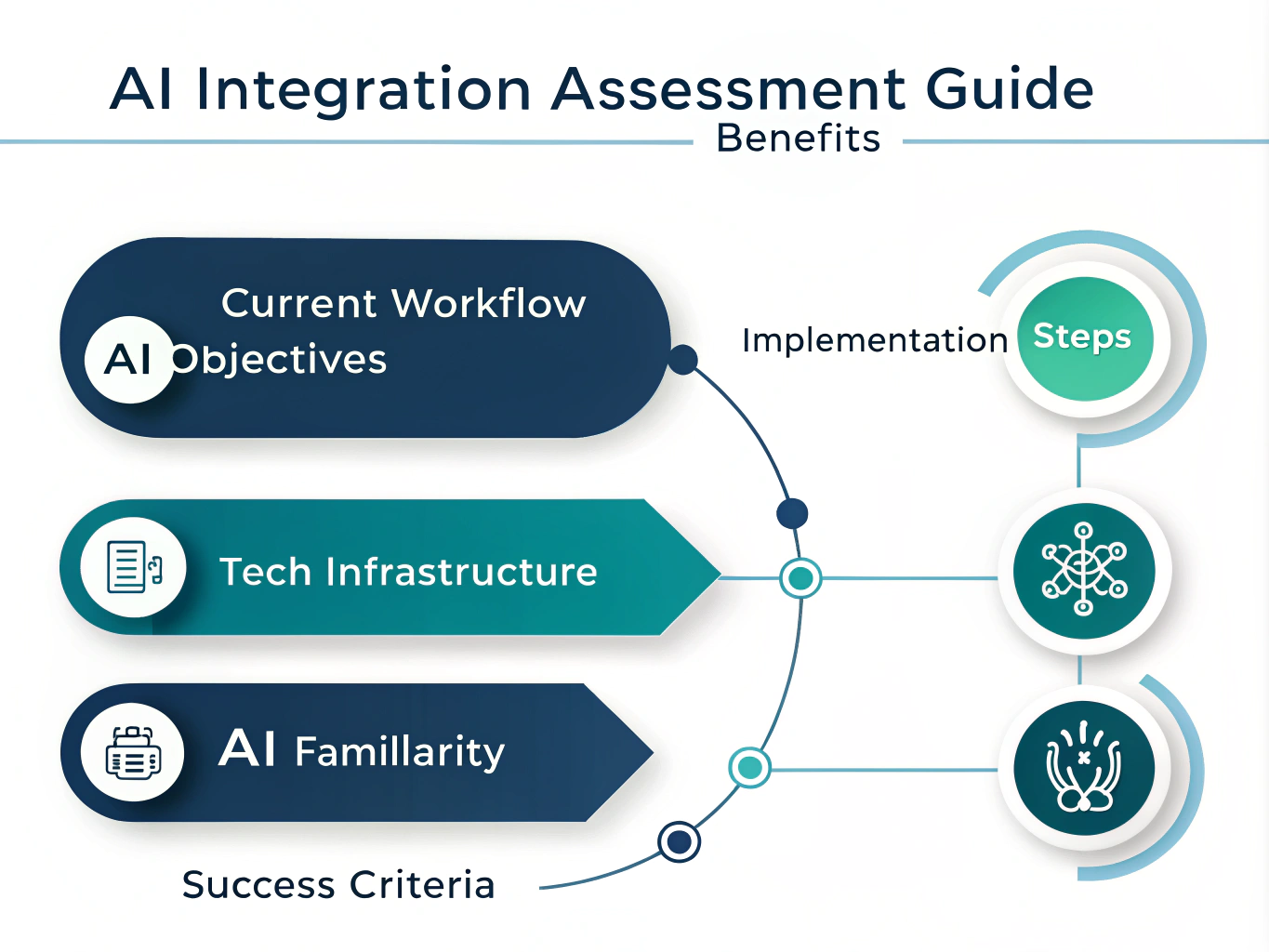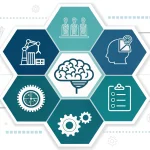AI Integration Assessment
Is this tool helpful?
How to Use the AI Integration Agenda Generator Effectively
Step-by-Step Guide to Using the Tool
Follow these steps to create a tailored initial meeting agenda that helps you assess the feasibility of integrating AI into your professional services workflow:
-
Describe Your Current Workflow: Provide a clear overview of how your team currently operates, including key tasks and challenges. Here are two example inputs:
- “Our accounting team manually consolidates invoices from multiple departments, which causes frequent delays and errors in monthly reports.”
- “We manage client onboarding with several disconnected tools, leading to duplicate data entry and inconsistent follow-ups.”
-
Define AI Integration Objectives: Outline the main goals you want to achieve by using AI in your processes. Examples include:
- “Automate invoice processing to cut validation time by 40% and reduce human errors.”
- “Streamline client onboarding by integrating AI chatbots to answer common questions and accelerate verification.”
-
Describe Your Technological Infrastructure (Optional): Provide details on the systems and platforms your organization currently uses. This helps evaluate your AI readiness. Sample inputs:
- “We operate with a hybrid cloud environment, use Microsoft 365 extensively, and have mid-level IT support.”
- “Our software consists mainly of legacy desktop applications with limited cloud connectivity.”
-
Indicate AI Familiarity Level (Optional): This helps the generated agenda match your team’s understanding of AI concepts. Possible entries:
- “Basic awareness of AI, with some team members experimenting with automation tools.”
- “Advanced knowledge, including data scientists and developers versed in AI model deployment.”
-
Define Success Criteria (Optional): Set measurable targets for what success looks like after AI integration. Example targets:
- “Reduce invoice error rate by 25% and improve monthly closing speed by 20%.”
- “Increase customer satisfaction scores by 15% within the first quarter of AI implementation.”
- Generate the Agenda: Click the generate button to receive a customized meeting agenda that addresses your specific needs and context.
- Review and Share the Result: Check the generated agenda for relevance, then copy and share it with your team to prepare for productive discussions.
What is the AI Integration Agenda Generator?
Tool Overview, Purpose, and Benefits
The AI Integration Agenda Generator is a practical tool designed to help professional services firms prepare for initial meetings focused on AI adoption. It creates a detailed, customized agenda based on your organization’s workflow, goals, and technological setup. This ensures your discussions are clear, focused, and productive.
Using this tool, you can:
- Save time by automating meeting agenda creation.
- Cover all essential aspects of AI feasibility comprehensively.
- Align discussions with your current business processes and goals.
- Identify organizational strengths and challenges early.
- Support informed decision-making on AI adoption.
Practical Usage of the AI Integration Agenda Generator
Applying the Tool in Real Business Contexts
This agenda generator fits a wide range of professional services firms exploring AI integration. Practical applications include:
-
Accounting Firms Automating Invoice Processing:
Use the tool to structure meetings centered on automating data entry, error detection, and report generation, considering existing accounting software ecosystems. -
Consultancies Exploring AI for Client Analytics:
Prepare agendas that evaluate client data handling workflows, AI-driven insight generation objectives, and infrastructure readiness for deploying AI models. -
Marketing Agencies Integrating AI for Campaign Management:
Focus discussions on automating content creation workflows, AI compatibility with marketing platforms, and measuring campaign performance improvements.
Key Meeting Topics the Generator Covers
- Analysis of current workflows and bottlenecks
- Clear articulation of AI integration goals
- Alignment of technical capabilities with business needs
- Assessment of existing technology infrastructure
- Evaluation of AI knowledge within the team
- Discussion on risk management and compliance factors
- Definition of success metrics and evaluation methods
Benefits of Using Tailored AI Integration Meeting Agendas
- Improved Meeting Efficiency: Focus time on critical discussions, avoiding missed topics or unnecessary tangents.
- Enhanced Stakeholder Alignment: Get all participants on the same page by covering both technical specifics and business objectives.
- Clear Roadmap for Implementation: Identify next steps and resource requirements based on a thorough assessment.
- Strengthened Decision-Making: Facilitate data-driven discussions grounded in your unique organizational context.
Sample Measurement Scenario: Evaluating Success Metrics
During your AI integration feasibility meeting, it’s important to define clear success criteria for measuring impact. For instance, a professional services firm might set the following targets:
- Achieve a 30% reduction in manual data entry hours within 6 months.
- Increase data accuracy to above 98%, minimizing rework.
- Boost client satisfaction scores by at least 10 points after AI-enabled service improvements.
Using this agenda generator helps organize your meeting topics to include discussion points on how to track and report progress against these objectives, ensuring that success metrics are realistic and measurable.
Important Disclaimer
The calculations, results, and content provided by our tools are not guaranteed to be accurate, complete, or reliable. Users are responsible for verifying and interpreting the results. Our content and tools may contain errors, biases, or inconsistencies. We reserve the right to save inputs and outputs from our tools for the purposes of error debugging, bias identification, and performance improvement. External companies providing AI models used in our tools may also save and process data in accordance with their own policies. By using our tools, you consent to this data collection and processing. We reserve the right to limit the usage of our tools based on current usability factors. By using our tools, you acknowledge that you have read, understood, and agreed to this disclaimer. You accept the inherent risks and limitations associated with the use of our tools and services.







